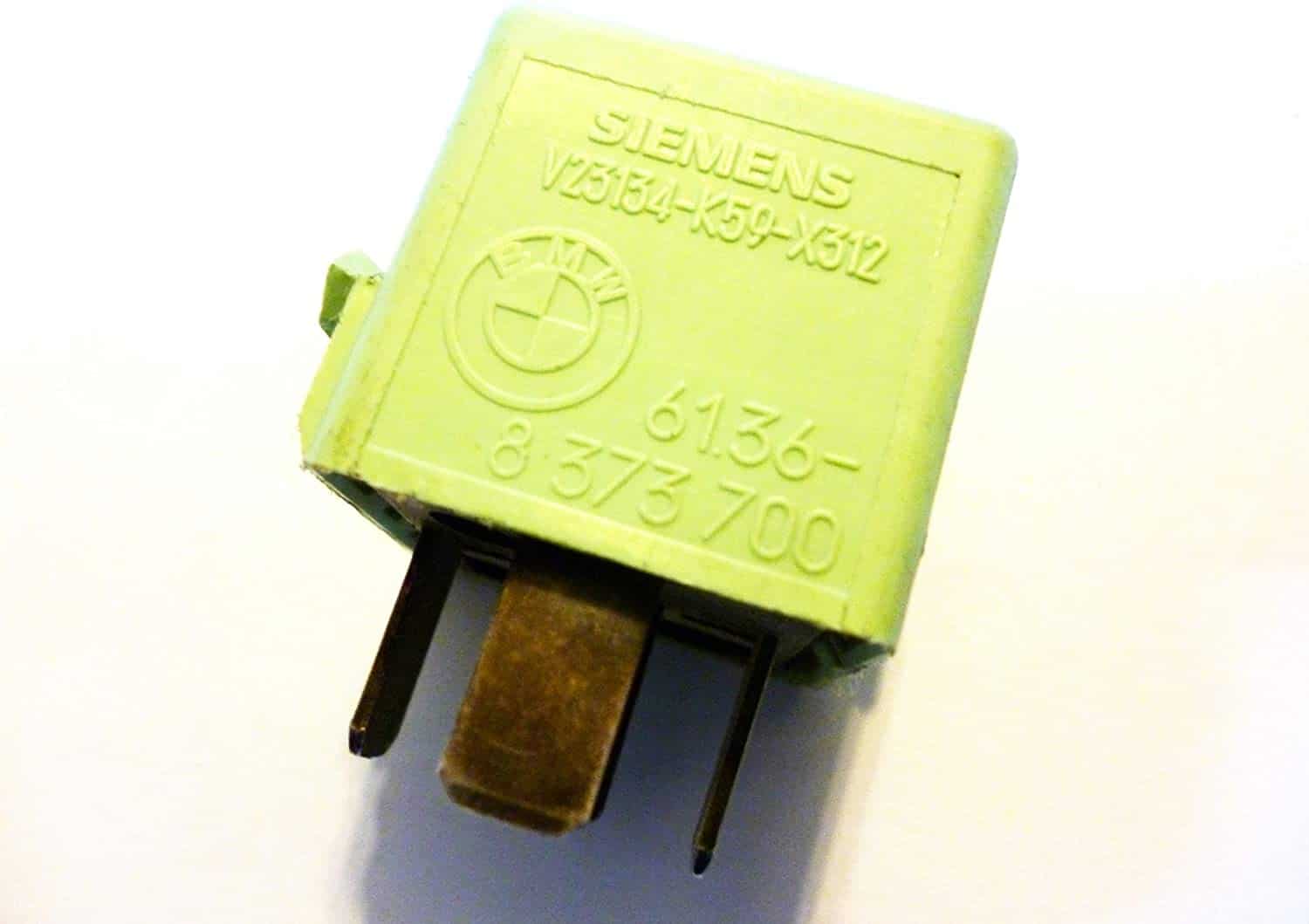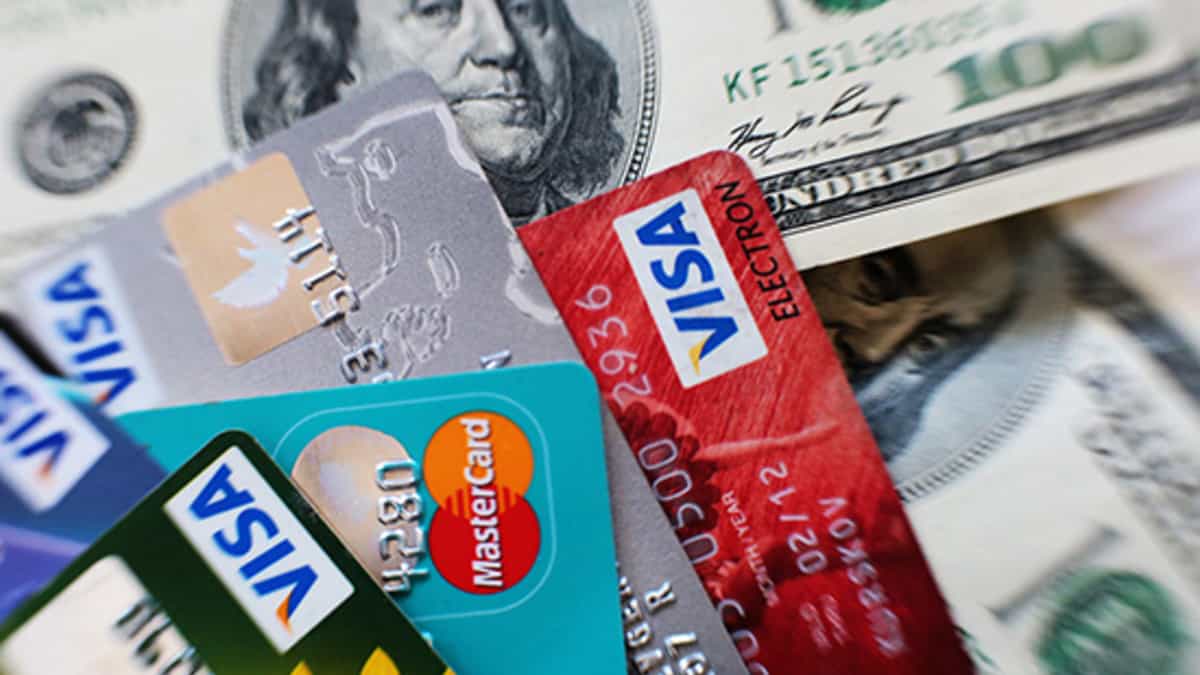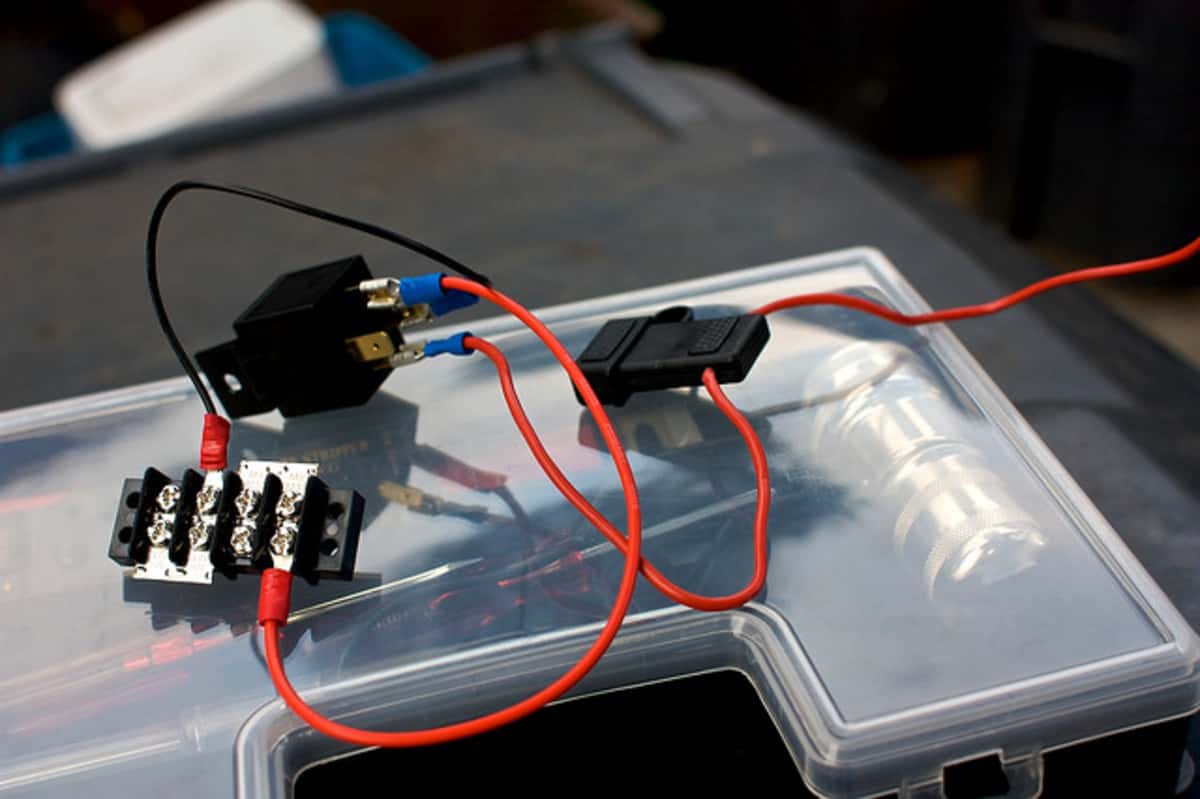Nothing is worse than trying to start your car and not being able to. It gets even more frustrating when a jump start won’t solve your problem.
The good news is that just because your car doesn’t have a dead battery doesn’t mean that you have a costly problem on your hands. If your vehicle has a lot of mileage and you find that you can’t get it started, you might have a faulty fuel relay.
How do you know if that’s your problem, and what do you need to do to fix it? There are some clear-cut signs of a bad fuel pump relay and some simple ways to test for a failed one. Just keep reading our guide to find out!
What is a Fuel Pump Relay?

A relay is a fancy name for an electrical switch, but it’s not something you turn on and off like a light switch. Instead, your vehicle’s ECU controls the relay, which turns it on and off whenever it’s needed.
The fuel pump relay controls the fuel pump’s power, an integral part of your vehicle’s engine. Because of this, if you have a faulty fuel pump relay, you likely won’t be able to start your car, and you’ll struggle to keep it running if you somehow manage to get it started.
Unlike fuses, relays don’t break very often, but they can if your system suffers a short or if your vehicle has over 100,000 miles. Just like all the components in your car, the more it gets used, the more likely it is to break.
Why Your Fuel Pump Relay Matters
Without fuel getting to your engine, you’ll never be able to get it running. While your fuel pump pulls the fuel out of your tank and pushes it to your injectors, it won’t do anything if it doesn’t have power.
But if your fuel pump is running nonstop, you’ll flood your engine, and it won’t run right either. That’s why your fuel pump must get the power to turn it on and off with ease. That way, your engine runs at peak performance.
That’s where your fuel pump relay comes in. It quickly and easily shuts off and turns on your fuel pump when your engine needs it. It gets its directions from the ECU, which uses inputs from every sensor in your engine to decide when the fuel pump needs to run.
So, why does your fuel pump relay matter? Because without it, you’ll never get off the driveway and onto the road.
Symptoms of a Bad Fuel Pump Relay

Diagnosing a bad fuel pump relay is easier than you think. There are a few telltale signs that let you know you need to dig a little deeper. And once your vehicle is displaying those signs testing your fuel pump relay is easier than you think.
Engine Stalls
There are two ways a fuel pump relay can break. It can get stuck in the off position or the on position. If you can get your engine started and it stalls out afterward, you might have a fuel pump relay that’s stuck in the on position.
This happens because your fuel pump is dumping fuel to the injectors, flooding your engine. Contrary to what you might think, excess fuel in your engine won’t give you any more power or blow up your engine. Your engine won’t be able to handle it, and the most likely outcome is that it will just shut off.
While having a fuel pump relay that is stuck on is a little rarer than having one stuck off, it does happen. If your engine is stalling, it’s worth testing your fuel pump relay to see if that’s the problem. It’s quick and easy and could end up saving you a ton of money.
The best part is that you don’t need to tear apart your engine to try and find a deeper problem before you rule it out!
Engine Does Not Start
This is a little more common than your engine stalling out. When your fuel pump relay is stuck in the off position, or just burnt out, you won’t be able to get your engine started. That’s because you won’t be getting any fuel from the tank to the cylinders, and you won’t have any ignition happening.
You will still hear your engine turning over, which might make it hard to hear anything else from inside the vehicle. Just because your engine won’t start and you have a good battery doesn’t guarantee that the fuel pump relay is the problem, but it is one of the easier things to rule out.
If your vehicle isn’t starting, check out number 3 on our list before you try troubleshooting your fuel pump relay.
No Noise from the Fuel Pump
This one ties directly in with number 2. If you are trying to get your engine started and don’t hear your fuel pump kicking in, there are two likely problems. Either you have a bad fuel pump or a bad fuel pump relay.
The easiest and cheapest thing you can do in this situation is to check your fuel pump relay. While it might be more likely that you need a new fuel pump, the relay is significantly cheaper and easier to check.
Before you go ordering a fuel pump, make sure that’s getting power. If you’ve ruled out both the fuel pump relay and ensured that the fuel pump is getting power, you likely need a new fuel pump.
Check Engine Light
Newer engines might have a check engine light if your fuel pump relay is stuck in the off position, but most engines will only have a check engine light turn on if the fuel pump relay is stuck delivering power to the fuel pump.
That’s because your check engine light turns on when one of the sensors in your engine is giving an errant reading to the ECU. This indicates a problem, and the check engine light gets illuminated.
However, if your fuel pump isn’t turning on, there typically isn’t a sensor that’s getting an errant reading. That’s why you typically won’t get a check engine light if your fuel pump relay is stuck in the off position.
How To Find Your Fuel Pump Relay

Your fuel pump relay is going to be in your vehicle’s fuse box. They typically are square and black, without any other distinguishing marks. If your fuse box has a cover, check the inside to see if it is labeled. Suppose it is, lucky you! All you need to do is find the fuel pump relay on the cover and track it down in the fuse box.
However, not every vehicle has a labeled fuse box right on the cover (although every car really should!). If you’re one of those unlucky vehicle owners who don’t have a labeled fuse box cover, you have one of two options.
The first option is that you can try to find a diagram in your vehicle’s owner’s manual. Once again, not every car will have a diagram (chart) in the manual. However, if there are any vehicle engineers out there reading this, you should put one there!
The other place you can try to track down a diagram is on the Internet. It’s not always the easiest thing to find, but chances are if you’re having this problem, others have too. The good thing is that mechanics are generally rather good about sharing what they’ve learned, and there are tons of forums out there with this kind of information.
You might have to read through a few forums to find it, but there’s an excellent chance that the diagram you’re looking for is out there. If you can’t find it on the Internet, you’ll need to reach out to a dealer and see if they’ll help you out. Sometimes they will, sometimes they won’t, and sometimes they’ll charge you for it.
How Can you Test for a Bad Fuel Pump Relay?
There are three ways to check for a bad fuel pump relay. Two of them are easy ways, and one of them is the right way. But spoiler alert, this mechanic of eight years uses the easy ways and has never misdiagnosed a relay.
Before utilizing any of these methods, you need to make sure that your relay is getting power. It doesn’t matter how much troubleshooting you do on relays; if the wiring doesn’t have any power, your relay won’t do anything.
Swap the Relay with Another One
It’s the easiest way to check if your fuel pump relay is bad. Once you open up your fuse box, you’ll see that your fuel pump relay looks identical to another 4-6 relays in there. They look similar because they are identical. They have the exact same OEM part number, and they do the same thing.
It makes it ultra-convenient when testing for a bad relay. Find a system that’s working, swap the relays, and see if the problem moves. If it does, you have a bad relay, and if it doesn’t, your relay isn’t the problem.
Of course, this is contingent on the relay getting power in the first place. A good relay won’t be able to do anything if it’s not getting any power.
Use a 6 Volt Battery
It’s an old trick that every mechanic has used, but it’s not foolproof. All you need to do is connect two of the posts on the relay with the positive and the negative end of the battery. If you hear a click, your relay is working just like it should. If you don’t hear the click, your relay is likely bad.
However, this method isn’t foolproof. The manufacturers didn’t design the relay to work off 6 volts, but most of them will anyway. There’s also an off chance the relay isn’t fully engaging or staying engaged after the fact.
If your relay doesn’t click over with a 6-volt battery, there’s a 99 percent chance that it’s bad, and if it does click over, there’s a 99 percent chance that it’s okay.
Furthermore, most relays will have either four or five posts. You’ll need to connect the right two for it to click over. You can look at the diagram on the relay to figure it out, or you can try all the different combinations to see if you find one that works.
You don’t have to worry about burning up the relay if you hook it up wrong; the 6-volt battery isn’t strong enough to break the relay unless it has significant problems.
Check for Resistance

Do you know how we said that a 6-volt battery only works 99 percent of the time? Checking for resistance works 100 percent of the time. However, you will need a multimeter or another diagnostic tool to check for resistance to see if your relay is working correctly.
The first part of this is checking to see if you have a short in the system. All you need to do is run a continuity check from the power terminal to the other power circuit terminal. If you can see any reading other than OL (infinite, out of limits, or open load), you have a shorted relay and need to replace it.
After that, connect one jumper wire from the power circuit terminal to the positive post on your battery. Connect a second wire from the control circuit terminal to a good ground. You should hear your relay click over. If it doesn’t, you have a bad relay.
If it does, you still need to check for resistance. It would help if you had little to no resistance. Otherwise, you have a bad relay and need to replace it.
Why do Fuel Pump Relays Break?
Your fuel pump relay might have broken due to a surge in the system, but it’s far more likely that it’s just old. Just like any component on your car can wear out with repeated use, your fuel pump relay is no different.
The metal posts can rust, or the switch inside the relay can snap off and break. While relays are relatively simple and rarely break, it does happen. Most of the time, it’s just due to age. Swap the relay and move on.
Can You Drive with a Bad Fuel Pump Relay?
Absolutely not. A bad fuel pump relay will either flood your engine or keep you from starting it in the first place. That means if you’re worried about your fuel pump relay due to a decrease in engine performance, you’re heading down a rabbit hole.
Look elsewhere for your problem.
How Expensive is a Fuel Pump Relay?

So, you found out that your fuel pump relay is the part that was giving you all those headaches. There’s good news; your fuel pump relay is one of the cheapest components in the entire system. While they are not as cheap as a fuse, fuel pump relays typically cost between 20 and 50 dollars.
Even better, since fuel pump relays are so easy to get to, the labor costs that go along with changing them should be nominal. The only additional fees that the mechanic may tack on is time for troubleshooting the problem.
But if you know that your relay needs to be changed, it shouldn’t take the mechanic longer than 15 minutes to complete the job from start to finish.
20 to 50 bucks might seem like a lot of money for a little piece of plastic and metal. Just count your blessings that it wasn’t the fuel pump. They typically cost between 100 and 200 dollars and require a lot more work to get to.
How Hard is it to Replace a Fuel Pump Relay?
As long as you can reach your fuse box, the fuel pump relay is one of the most uncomplicated components to swap out on your car. You might need a pair of pliers if the relay is really stuck in there, but other than that, all you need to do is find the right relay, pull it out, and put in the new one.
You should apply a little dielectric grease to the terminals to keep them from corroding. However, do not use too much grease, as it can work its way into an unsealed terminal if you do, and this could cause your relays to fail prematurely.
How Often do Fuel Pump Relays go Bad?
It’s rare, but it does happen. But it’s rare enough that if it happens once on your vehicle, the replacement should last the rest of the vehicle’s lifespan.
However, if you’re troubleshooting a no start, other likely conditions could be causing your problems. But since fuel pump relays are so easy to check, it’s one of the first things you should knock off your list, even if it is one of the lesser likely options.
Other Things to Check if Your Fuel Pump Relay is Good

There are a few conditions that could be keeping your car from starting, even if you have a good fuel pump relay. We will stick with the fuel system for this list, although other options could be causing your problems.
The Fuel Pump
It’s one of the most expensive components in your fuel system. Unfortunately, it’s also one of the ones most likely to break. There are tons of moving parts in your fuel pump, and if any one of them fails, you won’t be able to start your car. If you can’t hear the fuel pump kicking in, you’ve ruled out the relay, and you’ve got power, chances are you need a new fuel pump.
A Blown Fuse
If you checked for power and aren’t getting any, chances are you’ve got a blown fuse somewhere. It’s the cheapest problem possible, but if the vehicle has a short in the system, you’ll need to find the problem and fix it, or else you’re going to go through a ton of fuses.
There’s Air in Your Fuel System
If you’ve run your vehicle out of fuel or just replaced some components in your fuel system, like your injectors or fuel pump, you might need to purge the system of air. If there’s air in your system, your engine won’t run as it should.
You’ll need to purge the system by cracking the injectors to get your vehicle running again. If you can do it yourself, it’s free. If not, it’s going to take a couple of hours at a mechanic. However, they won’t need to order any parts.
Bad/Wrong Fuel
If you just left the pump when your problems started, the chances are that your fuel might be your issue. Sometimes you just get a bad batch, but it’s more likely that you used the wrong kind. Diesel in a gas car won’t run at all, and gas in a diesel vehicle will run terribly.
Now, if you’re trying to start a car that’s been sitting for a few years, the fuel has likely gone bad. You’ll need to drain the tank, purge the system, and put new fuel in before you can get anything running again.
Once again, no parts are needed here, but it does take a bit of time to get the job done.
Summary
Faulty fuel pump relays can be a significant headache to troubleshoot. Often amateur or at-home mechanics will forget about the relay entirely, jumping to more expensive components like the fuel pump or the injectors.
Take the time to check your fuel pump relay before you order any of those parts. It might not be likely that it’s a problem, but it’s so easy to check and so much cheaper than those other parts. It might seem like a waste of time, but it’s a possible chance to save hundreds of dollars and tons of headaches.








